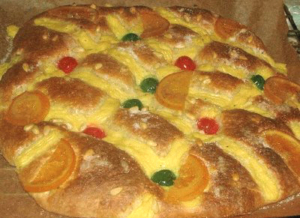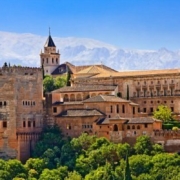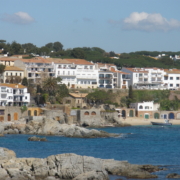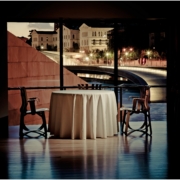The Eve of Sant Joan, 23 June
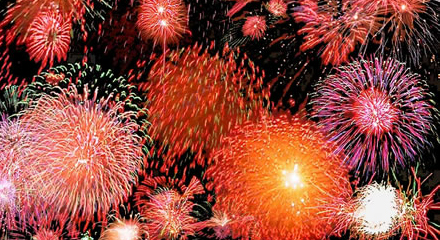
In Catalunya and throughout Spain, the most important celebration during the month of June is undoubtedly the Eve of Sant Joan (St. John). This is celebrated both in private houses and in public places, and there is dancing and the typical “coca”, as well as bonfires in some streets and squares, and fireworks. Catalonians celebrate the Eve of Sant Joan in their idiosyncratic way- the fiesta takes place the night before Saint John’s Day (June 24th), which coincides with the summer solstice. Old furniture is bundled onto bonfires in the villages and towns throughout Catalonia, the fire acting as a purifier and curative element.
At first, this was a rite celebrated in main village squares, bringing everyone together round the fire. Nowadays fireworks are also an integral part, particularly in the various city districts of Barcelona.
For the past 50 years or so in Catalonia, the flama del Canigó (Canigó flame – an emblematic mountain in the Pyrenees) has been part of the celebration. From the top of this mountain, the flames spread throughout the region as fires are lit in each community. The flame has contributed to a new vision of the celebration and signifies Catalan unity and identity.
The most enjoyable part of the Eve of Sant Joan are the verbenas (open-air celebrations) that last from sunset on 23 June to sunrise on 24 June.
The only official food on the Eve of Sant Joan is called the ‘Coca’. These are bread style cakes that you will see in bakery windows throughout the city. There are various types available – both sweet and savory. Some contain crackling, fruit and nuts or cream. The one ingredient that they all share in common is anise – giving all of the Cocas a distinctive aniseed flavor.
Aside from these cakes, there are no other traditional foods for this feast day. You will find that many Catalans eat out for dinner on the evening of 23rd June. If you have a restaurant in mind that you would like to eat at, it may be best to reserve a table to ensure that you will not be disappointed. The day after the Feast of Sant Joan – 24th June, is a bank holiday.
The Feast of Sant Joan celebrates the start of the summer. It is the longest day of the year and what is known as the Summer Solstice in England. It is one of the most important feast days for Catalans and is celebrated throughout the city. The idea is that on the night of Sant Joan the sun reaches its highest point, before beginning to drop. The sun is seen as a symbol of fertility and wealth and so it must be given strength. The strength is provided by bonfires and fireworks lit throughout the city for Sant Joan.
The Eve of Sant Joan is often described by Catalans as the ‘Nit del Foc’ – meaning the ‘Night of Fire’. The main aspect to the celebrations is fireworks. In the days leading up to the celebrations you will see temporary fireworks shops open up throughout the city, with queues down the street. Many groups of families and friends organize their own parties – known as ‘Revetlles’.
If you do not have a friend’s party to go to, the most common place for people to head to for Sant Joan is the beach. The beach begins filling up during the early evening on 23rd June, with groups who bring picnics and cava to watch the firework displays and listen to the music playing in the chiringuitos (beach bars). Groups of musicians and drummers also gather to provide the soundtrack to the evening’s events. The dramatic fireworks displays, which especially many of the seaside resorts present, are watched by hundreds of people both on the beach and in their homes, as the displays are magnificent and grand and can be seen from a great distance.
Barcelona is one of the most spectacular places to join in the fun on one of our Food and Wine Tours , where your private guide will introduce you all the local rituals of this very special festivity (and of course accompanied by all the best local food and wine)

